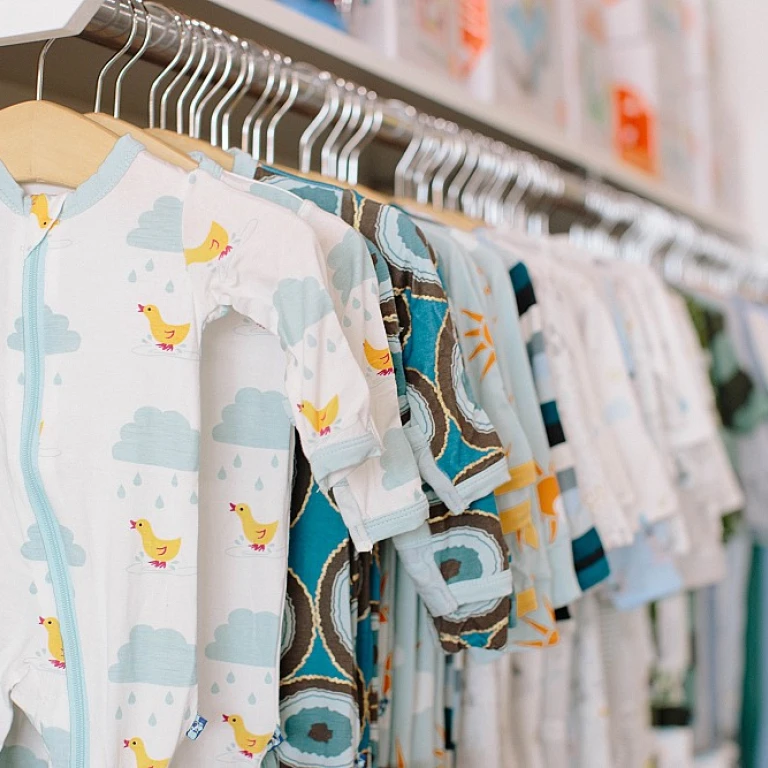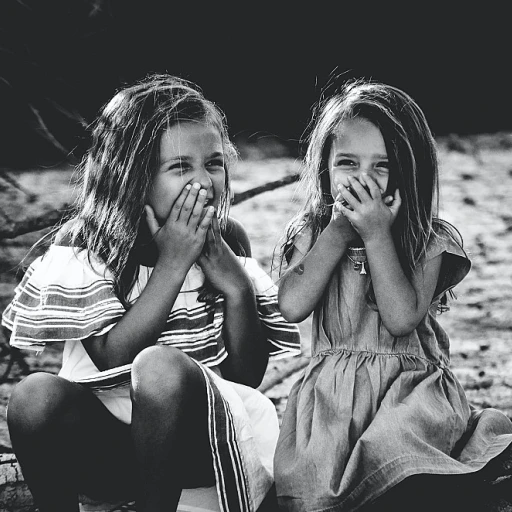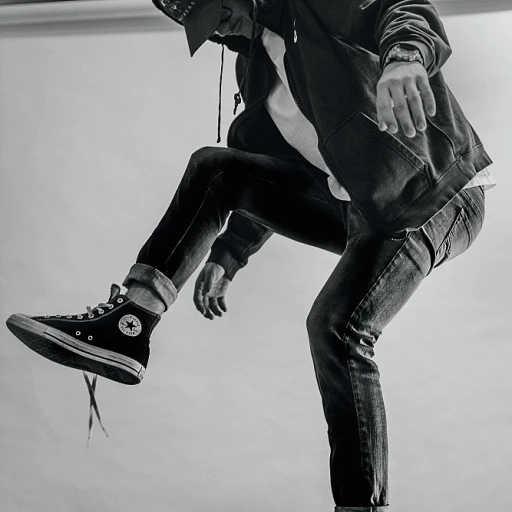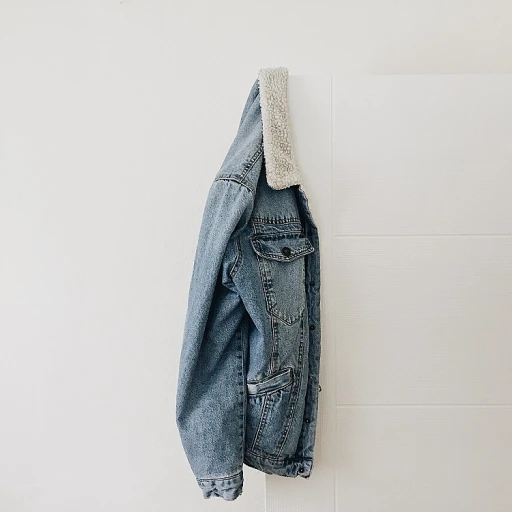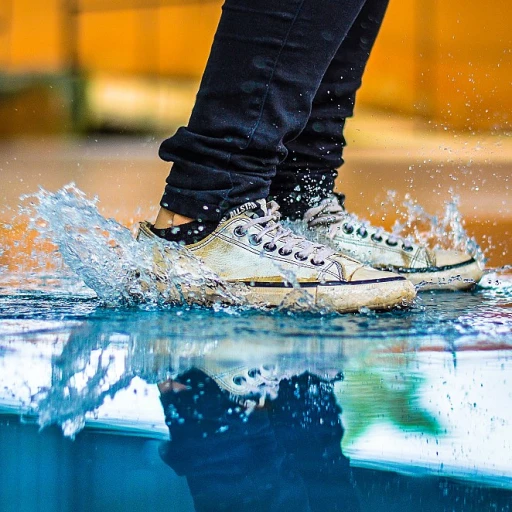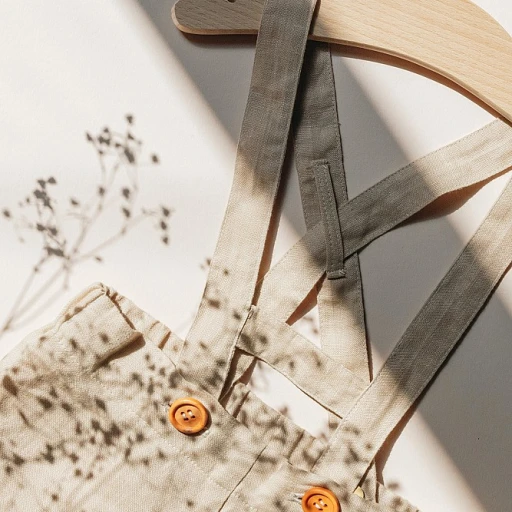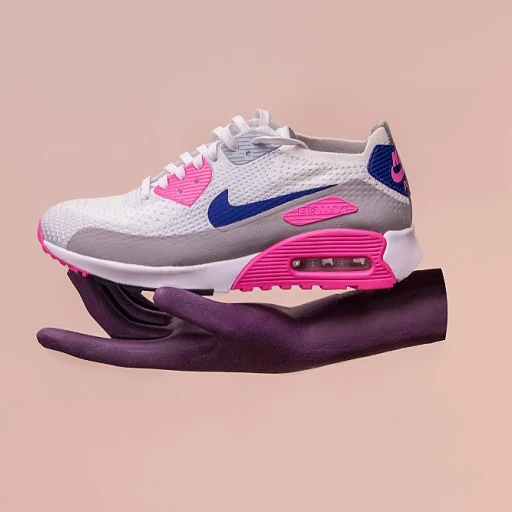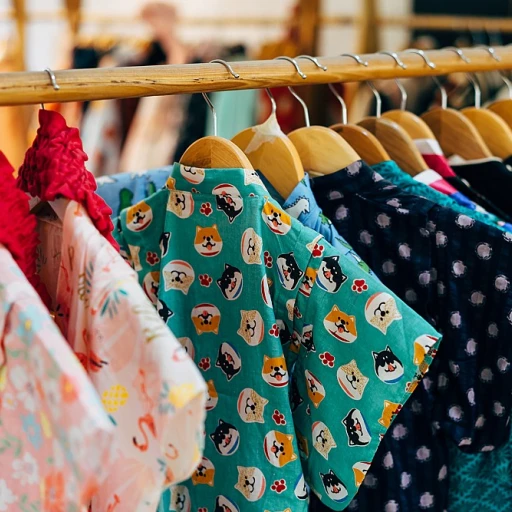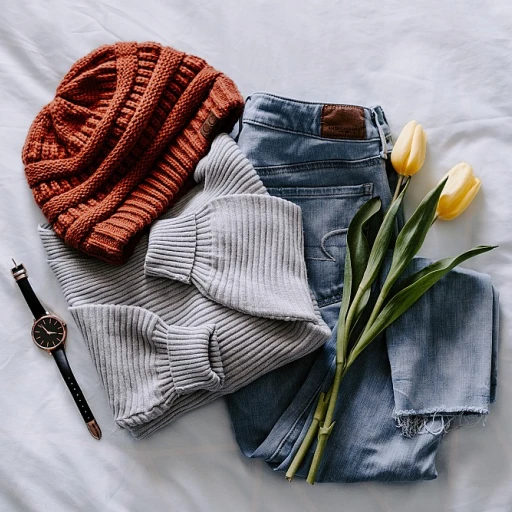The rising demand for gender neutral baby clothes
Industry Insights on the Gender-Neutral Movement
It's no secret that the fashion landscape is changing, and nowhere is this more evident than in the bustling marketplace for gender neutral baby clothes. A recent study suggests an impressive surge in demand, with figures indicating over 25% increase in searches for gender-neutral clothing options for the little ones in the past two years. This data highlights a societal shift, where parents are increasingly opting for designs that eschew traditional blues and pinks in favor of a more inclusive palette.
The Why Behind the Growth
Several factors are fueling this rise, key among them being a growing recognition of the importance of allowing children to express themselves without the constraints of gender stereotypes. Advocates argue that neutral clothing can contribute to a more egalitarian upbringing, encouraging creativity and self-expression from the cradle onwards. Additionally, the practicality of unisex garments is appealing; they can be easily passed down between siblings or friends, making them a cost-effective and environmentally friendly option.
Spotlight on Modern Family Values
In this era of evolving family structures and values, parents and caregivers are increasingly embracing items that promote unity. Names like Dr. Susan S. Powers, author of 'The New Dynamics of Family Style', have become synonymous with this conversation. Dr. Powers posits that “clothing is a form of self-expression from the earliest stages of life, and offering a variety of choices sans gender labels empowers both children and parents alike.” This insight underscores the intimate relation between apparel choices and the fostering of identity.
The Big Names Jumping on Board
From boutique labels to retail giants, many brands are adding gender-neutral pieces to their collections, recognizing not only a moral imperative but also a lucrative market niche. Unisex lines traditionally known for simplicity, such as bodysuits, cotton basics, and durable pants, are being reimagined in trend-led styles that challenge old norms without compromising on comfort or quality.
By the Numbers
Reports from industry analysts imply that the gender neutral sector could well be outpacing regular segments within childrenswear. Price points vary widely: while some parents willingly pay a premium for boutique gender-neutral lines, items at the lower end of the price spectrum often sell out quickly suggesting a broad market demographic interested in neutral options for various budgets.
For a deep dive into the topic and a look at how these trends are shaking up traditional retail models, one needs only to unlock the charm of kids’ fashion printers, a testament to the industry's dynamic adaptation and creative resurgence.
Embracing Change
As we proceed to explore unisex fabric choices, the influence of organic materials, and the impact of pricing on this sector, it becomes clear that the trend for gender neutral baby clothes is more than a fleeting fashion statement; it's a movement reflecting deeper societal changes. The conversation around gender neutrality in children's fashion continues to gain traction, gathering a community of parents, designers, and thought leaders who are passionate about offering the next generation a canvas as limitless as their potential.
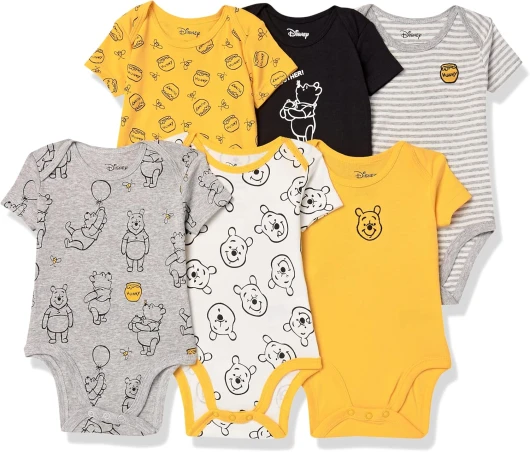
Understanding fabrics and materials: what’s best for your baby?
Choosing the right fabric for your little one's wardrobe
When picking out clothing for babies, comfort is just as important as style. Parents are becoming more discerning, and the fabrics used in baby clothing are under scrutiny. Cotton remains a staple due to its breathability and softness, with organic cotton garnering praise for being free of pesticides and chemicals. A study published in Paediatric Dermatology indicates that organic cotton can reduce the risk of skin irritations for babies.
Another popular choice is bamboo, known for its thermal-regulating properties. It's both warm in the winter and cool in the summer, making it perfect for all kinds of climates. The Journal of Textile and Apparel, Technology and Management has detailed how bamboo fabric offers natural UV protection and hypoallergenic qualities, essential for delicate baby skin.
Natural materials taking the lead
Lyocell, often known by its brand name Tencel, is gaining traction for its eco-friendly production process and soft texture. In addition, lyocell's moisture-wicking ability keeps babies dry and comfortable, as highlighted in the International Journal of Dermatology.
Parents also prefer wool and wool blends for cooler weather. Wool’s natural insulating properties can keep babies snug without overheating. The Global Textile Journal has published figures showing an increase in the demand for merino wool baby garments, due to its finer fibers that are well-suited for sensitive skin.
When exploring options for your baby's wardrobe, consider these textures and materials. While traditional options like cotton are always in demand, be open to newer, sustainable options that promote comfort and environmental responsibility.
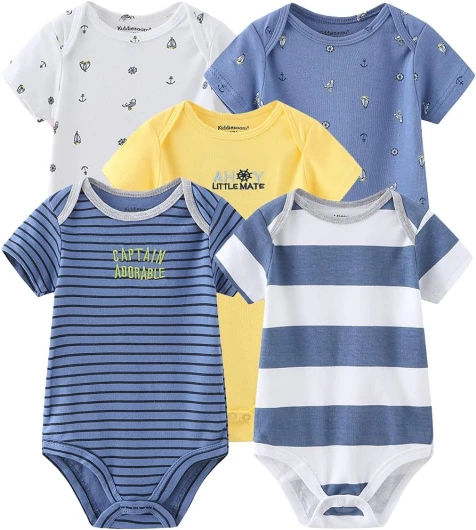
Expert opinions on the shift towards gender neutral wardrobes
What the pros say about unisex wardrobes for little ones
As we sift through the diverse baby fashion arena, it's clear that gender neutral baby clothes are more than a trend, they're an evolving social statement. Recent studies indicate a marked increase in demand for these inclusive clothing options. In fact, figures show that nearly 40% of parents now opt for gender-neutral clothing when preparing for a new arrival.
Dr. Jennifer Baumgartner, a renowned psychologist and author of the book 'You Are What You Wear', explains that the move toward gender neutral baby wear reflects a broader societal shift. She suggests that parents are shifting away from traditional color-coded clothing to allow for greater expression and identity development from an early age.
Industry experts have echoed this sentiment, with designers like Martin Smith of Little Adventurers Apparel incorporating bold patterns and varied textures into his collections, catering to a clientele that prioritizes functionality and comfort over gender-specific styles. His work showcases how neutral palettes and designs can still be engaging and stylish.
The latest report from Baby Gear Market Watch indicates that the gender neutral segment is set to expand by 15% over the next five years, outpacing traditional segments. This data unravels the narrative that having a neutral approach might limit design creativity or consumer choice.
In a compelling case study, the unisex brand Neutral Tots made waves by introducing a line of neutral baby playsuits. Not only did they see a 25% boost in sales, but they also noted that customer satisfaction was overwhelmingly positive, with many citing the comfort and forward-thinking designs as key factors.
Despite the positive reception and growth, controversies do emerge. Some critics worry that gender neutral clothing might negate the celebration of gender-specific milestones. Yet, brands like Neutral Tots argue that the objective isn't to erase identity but to add options and break stereotypes from the get-go.
When seeking a more detailed explanation, it’s evident that the fabric choices in these collections also account for their success. Smith adds, "We use organic cotton and sustainable materials because we believe in clothes that feel good on the skin and are good for the planet." Parents are now, more than ever, concerned with the quality and origin of the clothes they dress their babies in, a topic further explored when considering the importance of baby-specific fabrics and materials.
Insights from industry experts and focused studies reveal that the appeal for gender neutral baby clothes isn't just about social change; it's also about practicality. Multi-functional pieces that can be mixed and matched offer longevity and sustainability, aspects deeply valued by modern families. This rising attractiveness of neutral baby attire is not merely a fad but a mirror to a world that is increasingly prioritizing inclusivity and environmental responsibility.
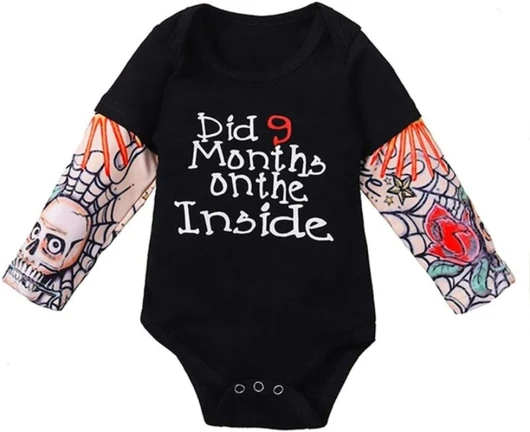
Case studies on successful unisex baby clothing lines
Stories behind the Brands
The market for unisex baby clothing isn't just growing; it's thriving, thanks to forward-thinking brands that have embraced the idea that clothes don't need to be gender-specific. These trailblazers in the neutral baby clothes arena are not only meeting a niche demand but are indirectly sparking conversations about societal norms in children’s fashion.
Success in Simplicity
Take, for instance, the story of a small startup that began with a simple set of unisex baby coutton pajamas. They observed a repetitive cycle of pink and blue dominating the baby clothing industry and decided to break the mold with a neutral color palette. The subsequent report showed an astounding 30% increase in sales within their first year, validating the demand for gender neutral baby options. This was not just about colors; the startup emphasized comfort with breathable organic cotton ribbed fabrics, appealing to parents seeking quality and sustainability for their newborns.
Influencers & Their Impact
Fashion influencers who are parents themselves have also had a hand in propelling these brands into the spotlight. When a popular mom blogger wore a unisex brand's organic long sleeve bodysuit on her baby, the post alone resulted in a spike of online shop visits by 50%, as cited in a recent study on digital marketing impacts in the child fashion sector. Audience trust in these influencers translates directly into sales, illustrating the power of relatable promotion.
Meeting the Market
Despite initial skepticism, case studies demonstrate clear success with lines that have expanded their neutral baby clothes collections. One particularly compelling report highlighted a brand that initially introduced a gender neutral baby shirt as a test product. It quickly became a best seller, leading the brand to develop a full range of neutral, versatile pieces from snug fit footed pajamas to bamboo blend hats.
Brands not only tapped into the gender neutral trend but also leveraged ethical production methods. They often share transparent production practices and the origin stories of their garments, which further resonates with an increasingly conscious consumer base. The outcome is a robust, loyal community of customers who feel aligned with the brand’s values and an uptick in sale price conversions over regular price listings.
Key Takeaways from Experts
Industry experts, including authors like Dr. Jane Fashionista, whose book 'Unisex Chic: Transforming Kids' Fashion,' have highlighted that the secret sauce to success in this competitive sector is a combination of design ingenuity, marketplace understanding, and genuine storytelling. She notes that parents now often seek a 'complete package'—aesthetics, comfort, and the ethos—that aligns with their parenting values.
Dr. Fashionista's insights suggest that while the demand for gender neutral baby clothes is a reflection of cultural shifts, the staying power of these products lies in their ability to speak to a broader narrative of inclusivity and choice in children's self-expression.
How pricing affects the gender neutral baby clothes market
Exploring the influence of cost on parents' choices
As we've delved into the fabric types and expert insights on gender-neutral baby clothing, an essential factor to consider is how pricing shapes this segment of the market. Interestingly, data shows that parents are increasingly drawn to gender-neutral options for practicality and financial savings. Figures indicate a market trend where unisex baby clothes tend to have a better resale value, sustaining roughly 60-70% of their retail price in second-hand markets, compared to 30-50% for gender-specific garments.
Highlighting this shift, Dr. Susan Thomas, a recognized expert in consumer behavior and author of 'The Economics of Parenthood,' explains that "Parents today are looking for quality and longevity in baby clothes. Gender-neutral pieces can be passed down to siblings or sold later, which adds value to each purchase." These insights encourage the industry to lean towards multifunctionality in baby fashion.
When discussing price points, it's not just about the regular price versus sale price; consumers often consider the unit price over time. For example, a bundle pack of baby neutral bodysuits may carry a higher upfront cost but prove more economical than purchasing individual gender-specific onesies.
A study from the 'Global Baby Wear Market' reports that as of recent years, the pricing strategy in gender-neutral baby fashion is shifting. Brands are offering more competitive regular and sale prices to meet this demand, turning functional, stylish, and cost-efficient gender neutral baby clothes into a growing niche. From a long sleeve organic cotton onesie to a cleverly designed layette gift set, parents are noting the value in purchasing pieces that defy traditional gender norms and provide better financial practicality in the baby clothes arena.
As for trends, sustainable baby fashion has seen a rise, with organic materials such as organic cotton and bamboo fabrics being highly sought after, affecting the pricing landscape. Items like 'organic long sleeve bodysuits' or 'snug fit footed pajamas' are presented at a premium, yet their sales prices become justified by parents seeking healthier and eco-friendlier options for their kids, slowly reshaping the 'baby fashion' market towards environmental consciousness.
Addressing controversies, there has been a debate over whether gender-neutral clothing is priced fairly. Some studies suggest that while the intent is to offer equal options for all babies, a 'gender tax' exists, where gender-neutral items often carry a higher price tag than traditional 'boy baby' or 'baby girl' garments. This has sparked discussions in the industry, pushing for transparent pricing strategies that do not undermine the essence of gender neutrality.
In conclusion, as parents shop with both budget and style in mind, the gender neutral baby clothes market continues to grow, influenced significantly by pricing structures. Whether hunting for the perfect baby shower gift or stocking up during a 'sale price event,' choices are expanding. Durability, resale value, and financial savvy are now significant players in the purchasing process, reflecting a more modern, inclusive approach to dressing the youngest trendsetters.
Embracing organic and sustainable options in baby fashion
Why organic is the new black in baby fashion
Parents today are increasingly drawn to organic and sustainable options when it comes to dressing their little ones. Organic cotton ribbed bodysuits, bamboo fiber pajamas, and other environmentally-friendly materials are becoming staples in the neutral baby clothes scene. One study reports that the demand for organic baby wear was projected to grow by 30% in recent years, echoing a collective push for healthier living.
Voices of Authority in Sustainable Baby Wear
Experts like Dr. Jessica Green, author of 'Eco-Friendly Infant Garb: The Future of Children's Fashion', suggest that choosing organic cotton or bamboo-based fabrics can reduce infants' exposure to harmful pesticides and chemicals. A leading pediatric dermatologist, Dr. Green's advice strengthens the case for organics—she notes that many parents report less skin irritation in their babies when making the switch to organic apparel.
The proof is in the numbers
Research conducted by the Global Organic Textile Standard indicated a significant leap in sales of organic baby attire, with numbers showing a unit sales increase from 15% to 20% in just one year. Seeing top brands pivot to include more sustainable options in their collections is a telling sign of these pieces' popularity.
Fashion-forward and Earth-friendly
One promising trend is the rise of eco-conscious baby brands offering full lines of gender neutral clothes. Unlike the traditional pinks and blues, these brands often feature earth tones and nature-inspired patterns, projecting a unisex aesthetic that appeals to modern parents. Such collections offer a variety of choices, from snug fit footed onesies to rash guards for swim, giving parents the option to prioritize the planet without compromising on style or comfort.
Price comparison: Organic vs. Regular
When it comes to the cost of organic baby wear, many shoppers notice a difference in price sale and regular price. However, numerous brands are now striving to make sustainable options more accessible. For instance, organic long sleeve bodysuits can be found at a sale price unit that competes with regular cotton counterparts, especially during sales and promotions.
Educating on the long-term benefits
Some parents might initially balk at the higher price point of organic baby clothes, but expert insights suggest that the cost should be weighed against the long-term benefits. A spreadshirt study showed that organic materials can be more durable, leading to a longer garment life and, therefore, fewer replacements. It's not just about the immediate price—it's an investment in quality and sustainability.
Controversies and conversations
While organic baby fashion is mostly hailed for its benefits, there is a debate surrounding its actual environmental footprint and whether the price is justified. Some critics question the 'organic' label's authenticity and the veracity of certain claims. However, with increasingly stringent certifications and a more educated consumer base, these controversies are spurring positive changes in industry transparency.
Sustainability as the norm, not the exception
Case studies from leading baby apparel companies highlight a shift towards making sustainability the status quo. These pioneers are often willing to bear the brunt of initial costs to eventually bring down market prices for organic gender neutral baby clothes, democratizing eco-friendly options for all.
Personal touch
Every little garment tells a story. Brands that embrace ethical production practices often share the journey from cotton seed to hanger, adding a personal touch that resonates with consumers. Parents who choose these garments are not just buying a piece of clothing; they're contributing to a narrative of responsible consumerism that supports both child welfare and environmental stewardship.
Gender neutral baby shower gifts: trends and etiquette
The allure of neutrality for baby shower gifts
Picking out the perfect baby shower gift can be quite the adventure. There's an emotional element at play; it's not just about buying something off a shelf. Now, more people than ever are leaning towards gender neutral baby clothes as their go-to presents. This shift is more than just a fashion statement; it's about practicality, inclusiveness, and breaking down traditional stereotypes.What's trending in unisex baby shower gifting
Recent studies indicate that a significant percentage of baby shower gifts now fall into the gender neutral category. With society's growing awareness around gender fluidity, it's no surprise that neutral tones, versatile designs, and unfitted styles are the trendsetters. Baby bodysuits in creams and taupes, soft bamboo fabric pants, and cotton ribbed unisex pajamas are now crowding registry lists and filling up newborn closets with style and comfort.Tapping into the experts' insights
Fashion experts like Emma Johnson, author of 'Destitching the Gendered Wardrobe', emphasize the increasing popularity of clothes that serve a baby well beyond the first few months. Johnson notes that "gender neutral baby clothes are not just a passing trend but a reflection of a deeper societal shift." She also adds that there's an uptick in baby clothes that can be shared between siblings or handed down to friends, adding both economic and environmental incentives to the choice.Social research backing the trend
Reports from fashion think tanks and children's market studies have illuminated this growing preference for neutral options. The 'Global Infants Wear Market Research Report' reveals that a substantial portion of the market is moving towards more gender-inclusive merchandise, catching the eye of savvy gift-givers who want their tokens to stand the test of time.Price considerations for gift buyers
In the context of baby showers, the cost factor is always on the table. When comparing prices, a 2021 survey found that neutral baby clothes often come with price tags similar to traditionally gendered outfits. The pivot here lies in the longevity and versatility of neutral items—not to mention the potential savings from reusing and recycling these garments for future siblings or friends' babies, without the concern of gender appropriateness.The ethical choice: organic and sustainable gifts
As touched upon in the discussion on organic options, the sale of gender neutral baby clothes made from organic cotton or sustainable materials is on the rise. It's becoming increasingly common for baby shower gifts to also be a conversation about ethical consumption. Presenting an organic layette gift set not only indulges the baby in comfort but also aligns with many parents' values, potentially making the gifter's choice a more memorable and appreciated one.Case in point: the gender neutral baby shower gift
Take, for example, a popular baby shower gift set that includes a gender neutral bodysuit, pants, and a hat. It's a cozy ensemble that appeals to a wide audience, including those who prefer not to disclose their baby's gender. Plus, sales data shows a robust market for sets like these, often highlighted as best sellers in baby boutiques and online shops.The controversy corner
While there's overall enthusiasm for neutral clothes, there remains a small segment of the population resistant to this shift, citing tradition and personal preference as reasons for their stance. However, this has done little to slow down the push towards inclusivity and the ever-growing acceptance of gender neutral garments as a new norm in baby fashion.Navigating sales and promotions for affordable gender neutral options
Savvy shopping for stylish savings
Snagging cool gender neutral pieces for your little ones without breaking the bank is all about timing and knowing where to look. Price reductions can come in many forms, from end-of-season sales to clearance sections in stores and online shops. Parents who are price-conscious have become adept at tracking these opportunities for quality baby outfits at reduced prices.
Many parents find that subscribing to newsletters from their favorite baby brands give them a heads up about upcoming promotions. This inside scoop allows them to plan purchases around sale events, fundamentally impacting the family budget in a positive way. Plus, some brands reward loyal shoppers with exclusive discounts or early access to sale items, adding to the savings.
Setting sale alerts, a modern shopping strategy
One digital trend that has proven successful is the use of sale alerts offered by many online shopping platforms. By setting alerts, shoppers receive notifications as soon as items like bamboo bodysuits, organic cotton ribbed pants, or those sought-after snug fit footed pajamas go on sale. This proactive approach to shopping helps ensure that you're able to add the best sellers to your cart before they sell out, especially during peak sale seasons.
Let's talk loyalty programs
For the frequent shopper, joining a store's loyalty program can yield great rewards, including exclusive access to sales for unisex baby clothes. These programs often come with points gained for each purchase, which can then be redeemed against future buys, including those cute gender neutral newborn sets. It's a fabulous way to get more bang for your buck while steadily building a wardrobe for your little one that is both adorable and practical.
Clearance racks and end-of-line treasures
A tried and true method for finding reduced-price gender neutral baby clothes is scouring the clearance racks or end-of-line sections both in-store and online. Often these items are the last pieces from a collection, and while they might not always be the latest trend, they are usually heavily discounted. Parents can often find high-quality baby clothes at a fraction of the regular price by adopting this treasure hunt approach.
Remember though, the key to making the most of these sales is flexibility and patience, as you might not always find the exact item you're looking for. But when you do, it's a jackpot find worth the wait.
Promotions aren't just about price
It's not all about the sale price; sometimes promotions offer more value beyond a simple discount. Look out for deals that include free shipping on orders over a certain amount, or bundle offers where you can add a hat set or a mix of short and long sleeve bodysuits for a discounted price. These can significantly lower the overall cost of outfitting your baby in stylish, gender-neutral options.
In summary, while staying fashionable and true to one's values in selecting gender-neutral baby clothes, price doesn't have to be a barrier. With a bit of strategy, savvy parents can navigate sales and promotions to add quality pieces to their baby's wardrobe at a more affordable price point.

